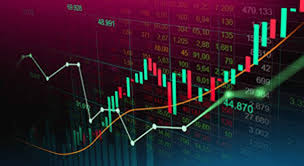
Forex trading is a fascinating and dynamic financial market that offers countless opportunities for investors and traders alike. Understanding the complexities of this global marketplace is essential for anyone looking to participate. In this article, we’ll delve into the intricacies of Forex trading, covering fundamental concepts, key strategies, and tips for success. For further insights, we recommend checking out forex trading explained FX Trading UZ, a valuable resource for both beginners and experienced traders.
What is Forex Trading?
The term « Forex » is derived from « foreign exchange, » which refers to the global marketplace for buying and selling currencies. It operates 24 hours a day, five days a week, with a trading volume that exceeds $6 trillion every day. This massive market is decentralised, meaning transactions occur over-the-counter (OTC) rather than on a centralized exchange. Forex trading involves speculating on the price movements of currency pairs, such as EUR/USD or USD/JPY.
How Does Forex Trading Work?
To engage in Forex trading, participants must first understand the basic structure of currency pairs. Each currency pair is made up of two currencies: the base currency and the quote currency. The base currency is the first currency in the pair, while the quote currency is the second. For example, in the EUR/USD pair, the euro (EUR) is the base currency, and the US dollar (USD) is the quote currency.
The price of a currency pair reflects how much of the quote currency is needed to purchase one unit of the base currency. If the EUR/USD pair is quoted at 1.20, it means that 1 euro is equivalent to 1.20 US dollars. Traders aim to profit from the fluctuations in these exchange rates by buying low and selling high (or selling high and buying low in the case of short selling).
Key Terminology in Forex Trading
Before diving deeper into Forex trading, it is crucial to familiarize oneself with some key terms:
- Pip: The smallest price movement in Forex trading, typically the fourth decimal place in a currency pair.
- Lot: The standard unit of measurement in Forex trading. A standard lot is 100,000 units of the base currency.
- Leverage: A tool that allows traders to control a larger position with a smaller amount of capital. While leverage can amplify gains, it also increases risks.
- Spread: The difference between the bid price (what buyers are willing to pay) and the ask price (what sellers want to receive).

Forex Trading Strategies
Successful Forex trading often relies on effective strategies. Here are a few common approaches:
1. Day Trading
Day trading involves opening and closing trades within the same trading day. This strategy is popular among traders looking to capitalize on short-term price movements. Day traders often use technical analysis and chart patterns to make their decisions.
2. Swing Trading
Unlike day trading, swing trading involves holding positions for several days or weeks to capture larger price movements. Swing traders typically perform both technical and fundamental analysis to make informed decisions.
3. Position Trading
Position trading is a long-term strategy in which traders hold positions for months or even years. This approach requires a deep understanding of market trends and economic indicators.

4. Scalping
Scalping is a high-frequency trading strategy that aims to take advantage of small price changes. Scalpers execute numerous trades within a short period, profiting from tiny fluctuations in the market.
Essential Tools for Forex Trading
To navigate the Forex market effectively, traders utilize various tools and resources:
- Trading Platforms: Software applications that allow traders to execute trades, analyze price data, and manage their accounts. Popular platforms include MetaTrader 4 (MT4) and MetaTrader 5 (MT5).
- Charting Software: Tools that provide visual representations of price movements, enabling traders to analyze trends and patterns.
- Economic Calendars: Resources that consolidate important economic events, such as interest rate announcements or employment reports, which can significantly impact currency values.
- Forex Brokers: Companies that facilitate trading by providing access to the Forex market. Choosing a reputable broker is critical to ensure a smooth trading experience.
Risk Management in Forex Trading
Managing risk is essential for success in Forex trading. Here are some strategies to consider:
- Set Stop-Loss Orders: A stop-loss order automatically closes a trade if the price reaches a specific level, limiting potential losses.
- Use Proper Leverage: While leverage can amplify profits, it can also magnify losses. Traders should carefully assess how much leverage they are comfortable using.
- Diversify Your Portfolio: Avoid putting all capital into a single trade or currency pair. Diversification can help reduce overall risk.
- Educate Yourself: Continuous learning and staying informed about market trends and developments is key to making sound trading decisions.
Conclusion
Forex trading is an exciting and potentially lucrative financial activity, but it comes with its own set of challenges and risks. By understanding the fundamentals of the Forex market, employing effective trading strategies, and prioritizing risk management, traders can enhance their chances of success. For those interested in exploring the Forex market further, resources like FX Trading UZ can provide valuable insights and tools. Whether you are a novice or an experienced trader, the world of Forex trading offers opportunities for everyone willing to put in the effort to learn and adapt. Happy trading!

COMMENTAIRES